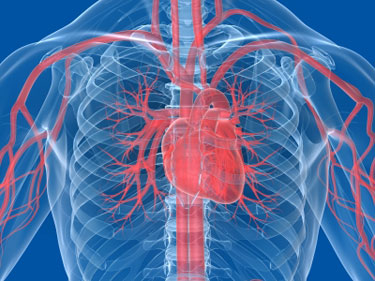
Today, 2.1 billion people “ nearly 30 percent of the worlds population “ are either obese or overweight, according to a new, first-of-its kind analysis of trend data from 188 countries. The rise in global obesity rates over the last three decades has been substantial and widespread, presenting a major public health epidemic in both the developed and the developing world.
Published in The Lancet on May 29, the study, Global, regional, and national prence of overweight and obesity in children and adults during 1980“2013: a systematic analysis for the Global Burden of Disease Study 2013, was conducted by an international consortium of researchers led by the Institute for Health Metrics and uation (IHME) at the University of Washington. Overweight is defined as having a Body Mass Index (BMI), or weight-to-height ratio, greater than or equal to 25 and lower than 30, while obesity is defined as having a BMI equal to or greater than 30.

Over the course of the study, rates of overweight and obesity among adults have increased for both men (from 29 to 37 percent) and women (from 30 to 38 percent). In developed countries, men had higher rates of overweight and obesity, while women in developing countries exhibited higher rates. Also in developed countries, the peak of obesity rates is moving to younger ages.
Obesity is an issue affecting people of all ages and incomes, everywhere, said Dr. Christopher Murray, Director of IHME and a Co-founder of the Global Burden of Disease (GBD) study. In the last three decades, not one country has achieved success in reducing obesity rates, and we expect obesity to rise steadily as incomes rise in low- and middle-income countries in particular, unless urgent steps are taken to address this public health crisis.
Looking at individual countries, the highest proportion of the worlds obese people (13 percent) live in the United States. China and India together represent 15% of the worlds obese population. Rates in the study were age-standardized, meaning they were adjusted for differences in population size and ages over time and across countries.

Among children and adolescents, obesity has increased substantially worldwide. Between 1980 and 2013, the prence of overweight or obese children and adolescents increased by nearly 50 percent. In 2013, more than 22 percent of girls and nearly 24 percent of boys living in developed countries were found to be overweight or obese. Rates are also on the rise among children and adolescents in the developing world, where nearly 13 percent of boys and more than 13 percent of girls are overweight or obese. Particularly high rates of child and adolescent obesity were seen in Middle Eastern and North African countries, notably among girls.
The rise in obesity among children is especially troubling in so many low- and middle-income countries, said Marie Ng, Assistant Professor of Global Health at IHME and the papers lead author. We know that there are severe downstream health effects from childhood obesity, including cardiovascular disease, diabetes, and many cancers. We need to be thinking now about how to turn this trend around.
Regionally, countries in the Middle East and North Africa, Central America, and Island nations in the Pacific and Caribbean have already reached exceptionally high rates of overweight and obesity “ 44 percent or higher. In 2013, the highest rates of overweight and obesity were seen in the Middle East and North Africa, where more than 58 percent of men and 65 percent of women age 20 or older were found to be either overweight or obese. More than two-thirds of the countries in the region had overweight and obesity rates of over 50 percent in adult men and women. In Central America, more than 57 percent of adult men and more than 65 percent of adult women were overweight or obese, with the highest prence “ greater than 50 percent among men and women “ found in Colombia, Costa Rica, and Mexico. In the Pacific Islands, nearly 44 percent of men and more than 51 percent of women are overweight or obese, as are nearly 38 percent of men and more than 50 percent of women in the Caribbean.
While the percentage of people who are either overweight or obese has risen substantially over the last 30 years, there have been marked variations across regions and countries. In developed countries, increases in obesity that began in the 1980s and accelerated from 1992 to 2002 have slowed since 2006. Conversely, in developing countries, where almost two-thirds of the worlds obese people currently live, increases are likely to continue.
Key findings:
- More than 50 percent of the worlds 671 million obese live in 10 countries (ranked beginning with the countries with the most obese people): the United States, China, India, Russia, Brazil, Mexico, Egypt, Germany, Pakistan, and Indonesia.
- The US, United Kingdom, and Australia are among the high-income countries with large gains in obesity among men and women.
- Over the 33-year period of research, the Middle East showed large increases in obesity. Bahrain, Egypt, Saudi Arabia, Oman, and Kuwait were among the countries with the largest increases in obesity globally.
- In six countries, all in the Middle East and Oceania “ Kuwait, Kiribati, the Federated States of Micronesia, Libya, Qatar, and Samoa “ the prence of obesity for women exceeds 50%. In Tonga, both men and women have obesity prence over 50 percent.
- In sub-Saharan Africa, the highest obesity rates (42 percent) are seen among South African women.
Health risks such as cardiovascular disease, cancer, diabetes, osteoarthritis, and chronic kidney disease increase when a persons BMI exceeds 23. In 2010, obesity and overweight were estimated to have caused 3.4 million deaths, most of which were from cardiovascular causes. Research indicates that if left unchecked, the rise in obesity could lead to future declines in life expectancy.
Source: The Institute for Health Metrics and uation (IHME)
Be a part of Elets Collaborative Initiatives. Join Us for Upcoming Events and explore business opportunities. Like us on Facebook , connect with us on LinkedIn and follow us on Twitter , Instagram.












